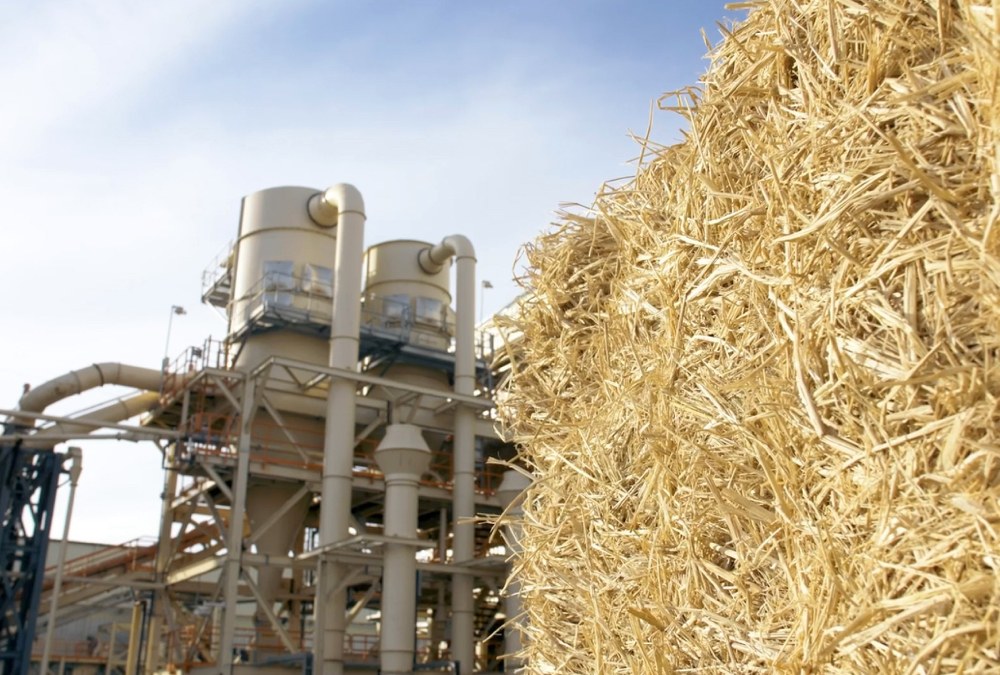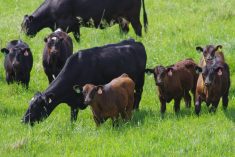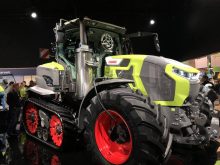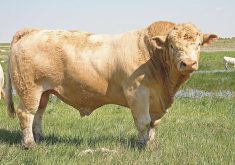Central Alberta wheat and barley growers may soon be able to turn their straw into gold — or at least into cold, hard cash — once an $800-million MDF plant is up and running near Trochu.
The recently announced Great Plains MDF plant will convert roughly 800,000 tonnes of wheat straw annually into 480 million square feet of straw-based medium-density fibreboard (MDF). There’s a booming market for that product, company officials say.
“Right now in the marketplace, there is a need for more MDF, especially in North America. Supplies are becoming a little bit tight,” said Wayne Wasylciw, vice-president of research and development for Great Plains MDF.
Read Also

Grazing ‘sweet spot’ boosts pasture performance
Timing-focused approach to pasture management touted to boost forage growth, livestock gains while also cutting farmer labour and inputs
“If we make a quality product like we expect to make, we’ll have no problems selling it in North America.”
Once in operation (construction is forecast to be complete by the end of 2022), the facility will source mainly wheat straw from within a 150-kilometre radius of its location near the CN Rail line in Kneehill County. But the “closer to the plant, the better,” said Wasylciw.
“As we go farther out, it becomes more expensive to acquire, and the return to the farmer may not be where they want it to be,” he said, adding straw will be priced on a sliding scale based on proximity.
Great Plains is also exploring using barley straw (which behaves a little differently than wheat straw) in its process, and between those two crops, there should be ample supply to meet demand, he said.
Robust demand
There’s a good market for MDF, which is used for cabinets, furniture making and panels, said industry expert Greg Lewis.
“In general, demand is pretty strong,” said Lewis, vice-president of wood panels for Forest Economic Advisors LLC. “The overall wood product demand in the North American market is quite healthy.”
That’s thanks, in part, to the pandemic.

In the early days of COVID-19, wood product producers fearing a prolonged downturn scrambled to get rid of inventory and slowed production. But the construction industry, including the cabinet and panel sectors, were deemed essential and the increased demand sparked a strong run-up in prices. And with millennials — “that age cohort is enormous” — entering their prime home-buying years, Lewis predicts the market will stay hot for some time to come.
“If you take a broader look over the next five years, our outlook is for strong overall demand for wood products in the North American market,” he said.
That’s good news for Great Plains, but product quality will be key.
“(Customers) expect a certain type of behaviour from the product,” said Wasylciw. “Clients won’t notice the difference with ours, and that’s a good thing, because it means they can use it in their existing processes.”
But there are some “intangibles” that make Great Plains’ MDF more attractive than wood-based products, he said. Straw is annually renewable, more waterproof, and has a lower density, making the straw-based MDF lighter for transportation and handling. The Great Plains’ process also doesn’t use formaldehyde.
All of that makes it more sustainable, he said.
“Everybody is always talking about climate change, and as a farmer myself, I know that farmers sometimes feel beat up hearing that they’re not doing things in a sustainable manner,” said Wasylciw, who farms near Edmonton. “I think we are — and this is a good way to prove that we’re part of the sustainability equation of the future.
“That might not resonate with every farmer, but it resonates with this farmer.”
The company also believes it’s an advantage to be in North America as most MDF comes from Asia, South America, and Europe, he said.
“Generally, North American customers would rather source product from North America if they can rather than bringing in product from overseas.”
Most of the MDF produced in North America is manufactured in the southern United States, with a handful of facilities in Canada (mostly in the East).
Troubled past
Making MDF from straw instead of wood was a hot prospect a quarter of a century ago, but the product never found success.
A handful of plants opened south of the border but had short lifespans. One of the most notable attempts was a facility built 25 years ago at Elie, Man., (30 kilometres west of Winnipeg) at a cost of $150 million. In its peak year, the Isoboard Enterprises plant bought 160,000 tonnes of wheat and oat straw from area farmers, but it went bankrupt after less than two years in operation. The facility was bought by Dow Chemical, but even that global giant couldn’t make it work. Dow BioProducts operated the plant for four more years, and closed it permanently in 2005. (For years afterwards, large piles of decaying, and allegedly rat-infested, old bales could be seen from the Trans-Canada Highway.
Lewis said he can’t predict whether Great Plains will be a success or not, but said there will be sales opportunities if its MDF wins marketplace acceptance.
“Is there enough demand to absorb more capacity? Our medium- to long-term story is that there is the demand there,” he said. “We do expect there to be sufficient demand to warrant additional capacity over the next five to eight years.”
There’s also a renewed interest in using straw instead of wood to make MDF. A new manufacturing facility that makes MDF from rice straw recently opened in California.
“It’s not necessarily new, but there’s almost nothing running that’s using non-wood-based fibre,” said Wasylciw. “But the technology is there, and it’s certainly open for more investment in the future.”
Great Plains expects to be sourcing large square bales once the plant is operational toward the end of next year and plans to build more facilities on the Prairies.
“We believe there’s room for growth in this, especially here in Canada,” said Wasylciw. “So we’re expecting to have multiple facilities, and that might happen a lot sooner than later.”
The company says it will need 200,000 tonnes of straw in its first year of operation and that will ramp up to 800,000 tonnes annually when it is at full production. It is asking farmers interested in selling straw to take a survey on its website (greatplainsmdf.com). The short survey asks producers how many acres of straw they could provide, and if they could bale, stack and haul the straw.
“We’re doing our best to work with farmers,” said Wasylciw. “The farming community is our lifeblood. If we don’t have them participating with us in this venture, we don’t have anything.”
– With staff files















